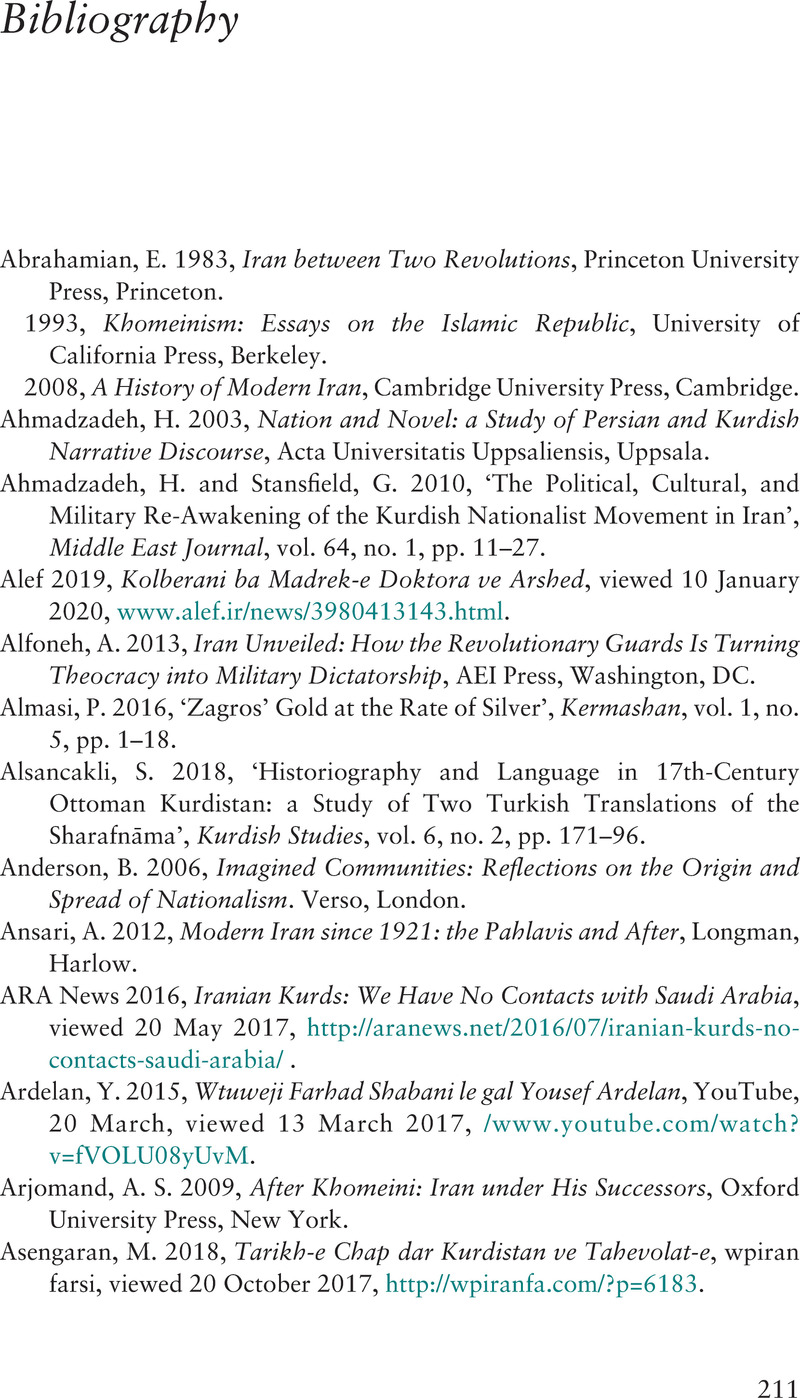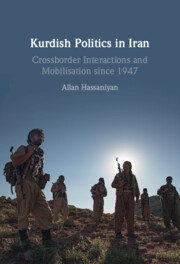Book contents
- Kurdish Politics in Iran
- Kurdish Politics in Iran
- Copyright page
- Dedication
- Contents
- Maps and Figures
- Acknowledgements
- Abbreviations
- 1 Introduction
- 2 Kurdish Nationalism: From Emergence to Politicisation
- 3 The Kurdish Peasant Revolt: the First Indication of Class Struggle
- 4 Movement Mobilisation through Crossborder Interaction
- 5 The 1979 Revolution and the Iranian Kurdish Movement
- 6 Khodmokhtari: the Focal Point of Kurdish–Regime Dispute
- 7 Internal Disintegration and Chaos
- 8 Decades of Decline and Uncertainty
- 9 Reform and Repression
- Conclusion
- Bibliography
- Index
- References
Bibliography
Published online by Cambridge University Press: 08 October 2021
- Kurdish Politics in Iran
- Kurdish Politics in Iran
- Copyright page
- Dedication
- Contents
- Maps and Figures
- Acknowledgements
- Abbreviations
- 1 Introduction
- 2 Kurdish Nationalism: From Emergence to Politicisation
- 3 The Kurdish Peasant Revolt: the First Indication of Class Struggle
- 4 Movement Mobilisation through Crossborder Interaction
- 5 The 1979 Revolution and the Iranian Kurdish Movement
- 6 Khodmokhtari: the Focal Point of Kurdish–Regime Dispute
- 7 Internal Disintegration and Chaos
- 8 Decades of Decline and Uncertainty
- 9 Reform and Repression
- Conclusion
- Bibliography
- Index
- References
Summary

- Type
- Chapter
- Information
- Kurdish Politics in IranCrossborder Interactions and Mobilisation since 1947, pp. 211 - 229Publisher: Cambridge University PressPrint publication year: 2021



